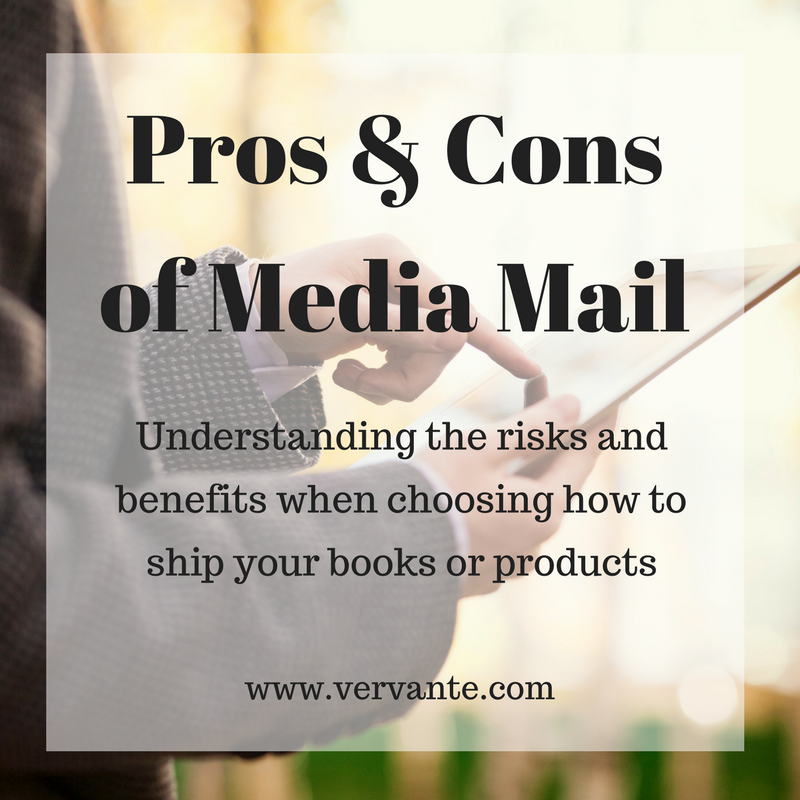The Pros and Cons of Using Media Mail
by Vervante •
 We ship our customers’ products anywhere in the world using USPS and UPS services. One question we often get deals with USPS Media Mail. It’s often noticeably less expensive, so what’s the catch? Here’s a quick explanation of how Media Mail works, and the benefits and risks when using it for shipping your own products.
We ship our customers’ products anywhere in the world using USPS and UPS services. One question we often get deals with USPS Media Mail. It’s often noticeably less expensive, so what’s the catch? Here’s a quick explanation of how Media Mail works, and the benefits and risks when using it for shipping your own products.
Media Mail is a cost-effective way to send materials such as books, cards, calendars, journals, DVDs, and CDs through the U.S. Postal Service. This service has certain rules and restrictions, however, including a maximum weight of 70 pounds and can only contain educational media.
Media Mail packages also usually take longer to get to their destination. Current USPS estimations are arrival in 2 to 10 days, but it can take longer.
Another point to consider is that Media Mail items are not insured and are open to postal inspection. The USPS retains the right to open and inspect your package to check for abuse of the system such as including an item not on their approved items list. Unfortunately, when a package is inspected, it is often poorly re-packaged before delivery to the customer. Some of our clients have reported that the re-sealing or taping of the original shipping package was so poorly done that boxes or envelopes were delivered empty to the recipient.
On the benefits side, though, Media Mail for orders shipped in the United States is usually much less than other methods, which makes it a popular choice.
To wrap it all up (no pun intended):
- Risks: Slow delivery, risk of inspections and damaged materials, no insurance, no compensation for damages
- Benefits: Dramatically cost-effective when compared to Priority Mail. For example, a package that costs $4.59 for Media Mail would be $11.95 via Priority Mail.
Here at Vervante, we offer our customers the ability to select the method of shipping they desire for all of their shipments (and a sizeable amount choose Media Mail). When deciding what method to use for your products, just remember that there is no wrong answer. Consider the pros and cons of each method, and your priorities, and we’ll do the rest.